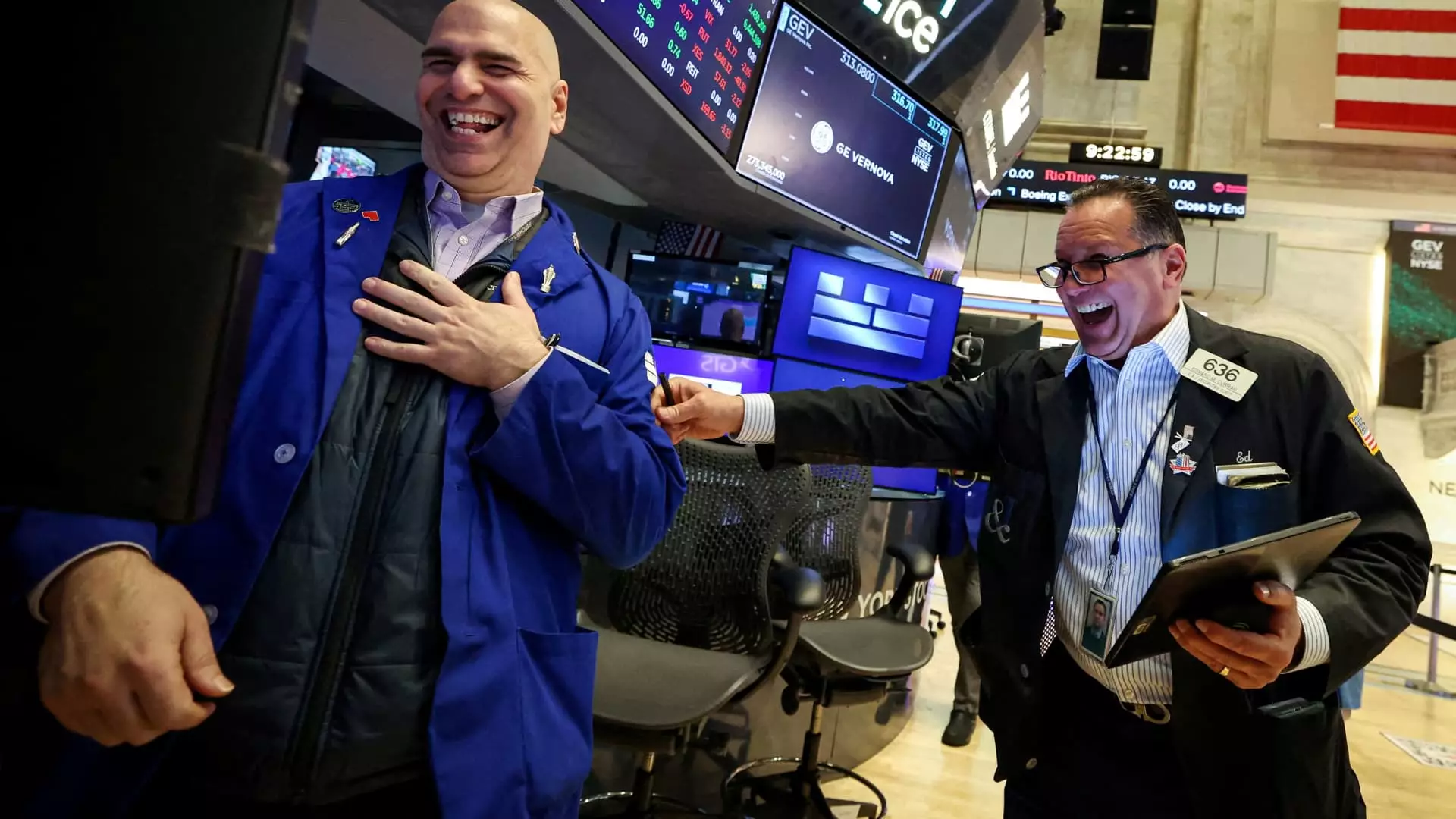The recent stock market surge has captivated analysts and investors, demonstrating how delicate and volatility-prone market dynamics can be. A significant catalyst in this dramatic turnaround has been the compulsive frenzy of short sellers scrambling to cover their positions. When hedge funds ramp up their bearish bets, adding fuel to a volatile market environment, the repercussions are often swift and palpable. As stocks fluctuate wildly, it can reveal not just investor sentiment, but also the powerful impact of strategic financial maneuvers.
A short seller profits when a borrowed asset is sold at a high price, only to be repurchased later at a lower price as markets decline. However, such betting can spiral downward when prices unexpectedly rally. This is precisely what happened recently as hedge funds found themselves amid a painful short squeeze, forced to buy back shares at increasingly higher prices to minimize losses. This phenomenon exemplifies how market psychology and momentum intertwine to create explosive market movements.
The Underlying Causes of Recent Market Movements
Goldman Sachs pointed out that increased short selling, amidst a whipsaw market scenario triggered by President Trump’s impulsive tweets on tariffs, played a pivotal role in creating an environment primed for a rally. The messages—especially following the diplomatic back-and-forth with China—led to confusion and uncertainty, causing traders to hedge their bets aggressively. When Trump softened his stance, the ensuing short squeeze sent stocks spiraling upward, a vivid illustration of how sentiment can shape market forces.
Such market behavior speaks to a larger issue within trading cultures that often lean on rapid shifts in perception rather than rooted economic fundamentals. This rally, disproportionate to any concrete news, signals a pressing caution for investors who may be getting ahead of the real economic indicators. Instead, what we observe is emotional trading responding to the whims of national leaders, confirming fears that the market’s underlying health may not be as robust as portrayed.
Market Sentiments and the Role of Fear
Fear is a ubiquitous presence in trading environments, often dictating investor behavior more than tangible evidence of market performance. As uncertainty regarding trade relations with China lingered, many hedge funds reacted to a fearful narrative, doubling down on short-selling strategies to safeguard against potential downturns. Yet, these strategies, while seemingly prudent, are also laced with inherent risks—particularly when they draw attention to vulnerabilities that can lead to dramatic market oscillations.
The quick reversal of Trump’s comments regarding Federal Reserve Chair Jerome Powell only exacerbated these market fears, providing a peculiar sense of stability that, ironically, was built on shifting sands. Industry experts like John Flood of Goldman Sachs have underscored that observing hedge fund positions is critical in determining the market’s next steps. When investor emotions overshadow rational analysis, the potential for volatility increases, leaving anyone navigating these waters vulnerable to potentially massive upheaval.
The Illusion of Confidence: Exploring Long-Term Implications
Although the market witnessed a substantial uptick, there’s something unsettling about the confidence displayed amidst such fragility. The Dow Jones Industrial Average’s remarkable gains, while impressive, raise questions about sustainability. With hedge funds still primarily in short-covering mode rather than transitioning to long-side buying, the insistence that this uptick reflects genuine market strength should be approached with caution.
To claim a victory based solely on temporary surges misconstrues the nature of investing itself. The lack of deeper engagement by institutional investors, who are typically the stabilizing force in a market rally, hints at a precarious landscape just waiting for the next wave of uncertainty. Until longer-duration investors display greater confidence in significantly undervalued equities, the cannon shot of bullish sentiment may not have explosive staying power.
This aligns with a broader concern that unmoored financial strategies can contribute to market cycles that appear resilient but are inherently unstable. When the realities of economic fundamentals stand in stark contrast to fleeting market movements, the risk grows for all market participants, not just those engaged in short-selling practices. The quest for genuine investment value could mean the difference between navigating the uncertain waters of market fluctuations or becoming another victim of an avoidable financial catastrophe.

